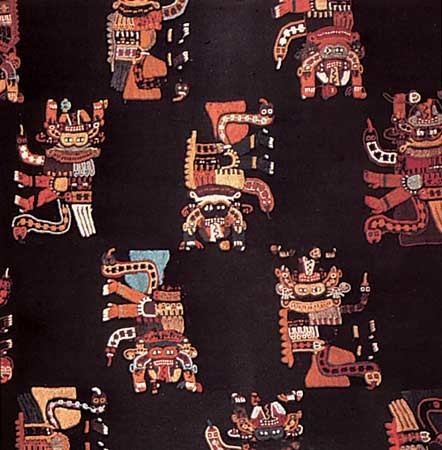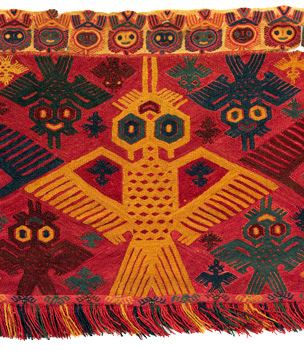 | ||
The nazca and paracas
The Paracas culture was an Andean society between approximately 800 BCE and 100 BCE, with an extensive knowledge of irrigation and water management and significant contributions in the textile arts. It was located in what today is the Ica Region of Peru. Most information about the lives of the Paracas people comes from excavations at the large seaside Paracas site on the Paracas Peninsula, first investigated by the Peruvian archaeologist Julio Tello in the 1920s.
Contents
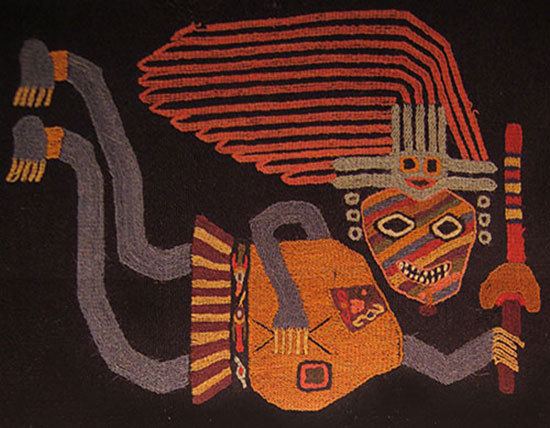
The Paracas Cavernas are shaft tombs set into the top of Cerro Colorado, each containing multiple burials. There is evidence that these tombs were reused over centuries. In some cases, the heads of the deceased were taken out, apparently for rituals, and later reburied. The associated ceramics include incised polychrome, "negative" resist decoration and other wares of the Paracas tradition. The associated textiles include many complex weave structures as well as elaborate plaiting and knotting techniques.

The necropolis of Wari Kayan consisted of two clusters of hundreds of burials set closely together inside and around abandoned buildings on the steep north slope of Cerro Colorado. The associated ceramics are very fine plain wares, some with white and red slips and other with pattern-burnished decoration, and other wares of the Topara tradition. Each burial consisted of a conical textile-wrapped bundle, most containing a seated individual facing north across the bay of Paracas, next to offerings such as ceramics, foodstuffs, baskets and weapons. Each body was bound with cord to hold it in a seated position, before being wrapped in many layers of intricate, ornate, and finely woven textiles. The Paracas Necropolis embroideries are now known as some of the finest ever produced by Pre-Columbian Andean societies, and are the primary works of art by which Paracas is known. Burials at the necropolis of Wari Kayan continued until about 250 CE, and many of the mortuary bundles include textiles like those of early Nazca.
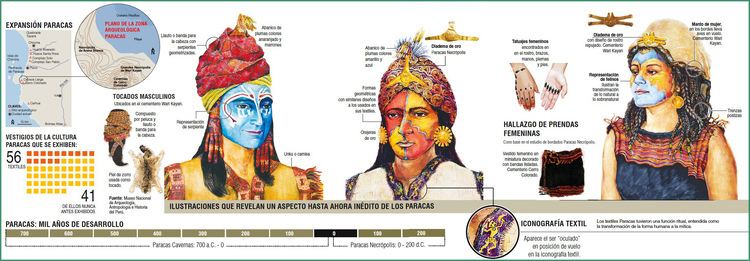
Paracas candelabra peru
Topara
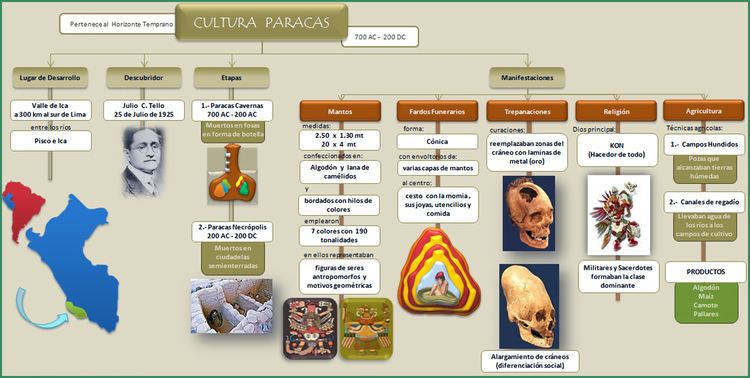
While the Paracas culture developed in this region between about 1200 BCE and 100 BCE, the Topará culture is thought to have "invaded" from the north at approximately 150 BCE. The two cultures then coexisted for one or more generations, both on the Paracas Peninsula and in the nearby Ica Valley, and their interaction played a key role in the development of the Nazca culture and ceramic and textile traditions. Though the elaborate textiles have only been preserved in the coastal desert sites, there is growing evidence that people associated with these cultures lived and traveled between the Pacific lowlands and the Andean highland valleys and mountain pastures to the east.

